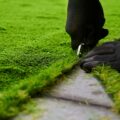Selecting quality cannabis seeds is crucial for any grower to cultivate robust and healthy plants. Whether you’re a novice gardener or a seasoned cultivator, understanding the nuances of seed selection can greatly influence your garden’s output and quality.
This guide delves into the essential aspects of choosing the best cannabis seeds, including genetic background, seed appearance, and germination rates, helping you make informed decisions for successful cultivation.
The objective is to empower you with knowledge on differentiating between high-quality and subpar seeds, laying the groundwork for a thriving cannabis garden that meets your cultivation goals.
Understanding Seed Genetics
Importance of Genetic Background
The genetic makeup of a cannabis seed is a critical determinant of the plant’s potential. High-quality seeds originate from well-stabilized strains, which ensures consistent characteristics such as growth pattern, potency, aroma, and resistance to pests and diseases. When selecting seeds, consider:
- Strain type: Indica, sativa, or hybrid, as each has distinct growing characteristics and effects.
- Genetic purity: Opt for seeds from reputable sources to avoid genetically diluted variants that might not perform as expected.
In addition to these points, evaluating the breeder’s reputation and the strain’s genetic lineage can provide deeper insights into the seed’s potential. Well-known and respected breeders often deliver quality genetics that produces predictable and desired offspring traits.
Selecting the Right Strain
Choosing a strain should align with your specific growing conditions and desired effects. Factors to consider include:
- Climate compatibility: Some strains thrive in specific climates and temperatures.
- Flowering time: This varies by strain and can affect your growing schedule.
- Yield potential: Understand the average yield of the strain to ensure it meets your expectations.
- THC/CBD ratios: Depending on whether you seek recreational or medicinal benefits, select a strain with appropriate cannabinoid profiles.
Furthermore, consider the strain’s resilience to environmental stresses such as mold, pests, and fluctuations in temperature and humidity. Selecting a resilient strain can reduce the need for intensive care and increase the likelihood of a successful harvest.
Physical Seed Assessment
Visual and Tactile Indicators
The appearance of a cannabis seed can often indicate its quality. Healthy seeds typically exhibit:
- Color: A healthy seed has a dark brown shell with a smooth, glossy finish.
- Shape and size: Mature seeds are usually teardrop-shaped and have a substantial size that indicates good development.
Beyond these visual cues, the weight of a seed can also be a good indicator of its quality. A denser seed typically contains more stored nutrients, enhancing the seedling’s development once germinating.
Seed Hardness and Sound
A simple yet effective test for seed quality is the hardness and sound test:
- Hardness: Squeeze the seed lightly between your fingers; quality seeds are hard and do not crush.
- Sound: When dropped onto a hard surface, a viable seed will emit a sharp, clear “click” sound.

This tactile and auditory assessment helps further ensure the seed’s robustness and readiness for germination. A brittle seed, on the other hand, often signifies poor quality and is unlikely to germinate successfully.
Germination Rates and Viability
Assessing Seed Viability
Before planting, assessing the viability of your seeds can save time and resources. Techniques include:
- Water test: Seeds that sink to the bottom after soaking in water for a couple of hours are typically viable.
- Germination test: Place a few seeds between moist paper towels and check for sprouting after a few days.
Testing a small sample of seeds can also help predict the overall batch’s viability, providing an estimate of the germination rate you can expect.
Factors Influencing Germination
Several factors can influence the germination rate of cannabis seeds:
- Age of the seed: Fresh seeds tend to have higher germination rates.
- Storage conditions: Seeds should be stored in cool, dark places to maintain viability.
- Handling during shipping: Excessive handling can damage seeds, reducing their germination potential.
Correct storage and handling are paramount in preserving seed viability. Even the most robust seeds can suffer reduced viability from exposure to direct sunlight, moisture, or extreme temperatures during storage.
Legal Considerations
Understanding Your Local Laws
Before purchasing or planting cannabis seeds, it is essential to understand the legal framework in your area. This includes:
- Legality of cultivation: Ensure that growing cannabis is legal in your jurisdiction.
- Limitations on plant counts: Many regions have limits on the number of cannabis plants you can grow.
Navigating these legal waters can be complex, and understanding your rights and responsibilities is crucial for any grower.
Compliance and Documentation
To comply with local regulations, consider:
- Record keeping: Maintain records of purchase and plant counts.
- Source transparency: Purchase seeds from licensed dispensaries or banks to ensure compliance with local laws.
Adhering to these practices not only ensures legal compliance but also establishes good cultivation standards, enhancing the legitimacy and sustainability of your gardening endeavors.
Conclusion
Choosing the right cannabis seeds is both an art and a science, requiring attention to genetic detail, physical characteristics, and legal considerations.
By carefully selecting your seeds based on the criteria discussed, you can enhance your chances of cultivating a healthy and bountiful garden.

Remember, a successful harvest begins with high-quality seeds, so invest time in learning about and selecting the best possible genetics for your needs. This strategic approach maximizes your yield and ensures a compliant and efficient cultivation process. For more detailed insights into where to acquire top-quality seeds, consider visiting this article on reputable cannabis seed banks, which offers a comprehensive list of trusted providers.
An Occupational therapist, freelance content writer and more importantly a stay-at-home mom, Sara, like all other parents juggles her many roles. Her passion for writing combined with her professional expertise as an Occupational therapist (working with children with special needs) has helped her craft content specific to child health, wellness and learning skills. At present, Sara alternates her time between raising her two young children, and writing about what she knows best- children!





